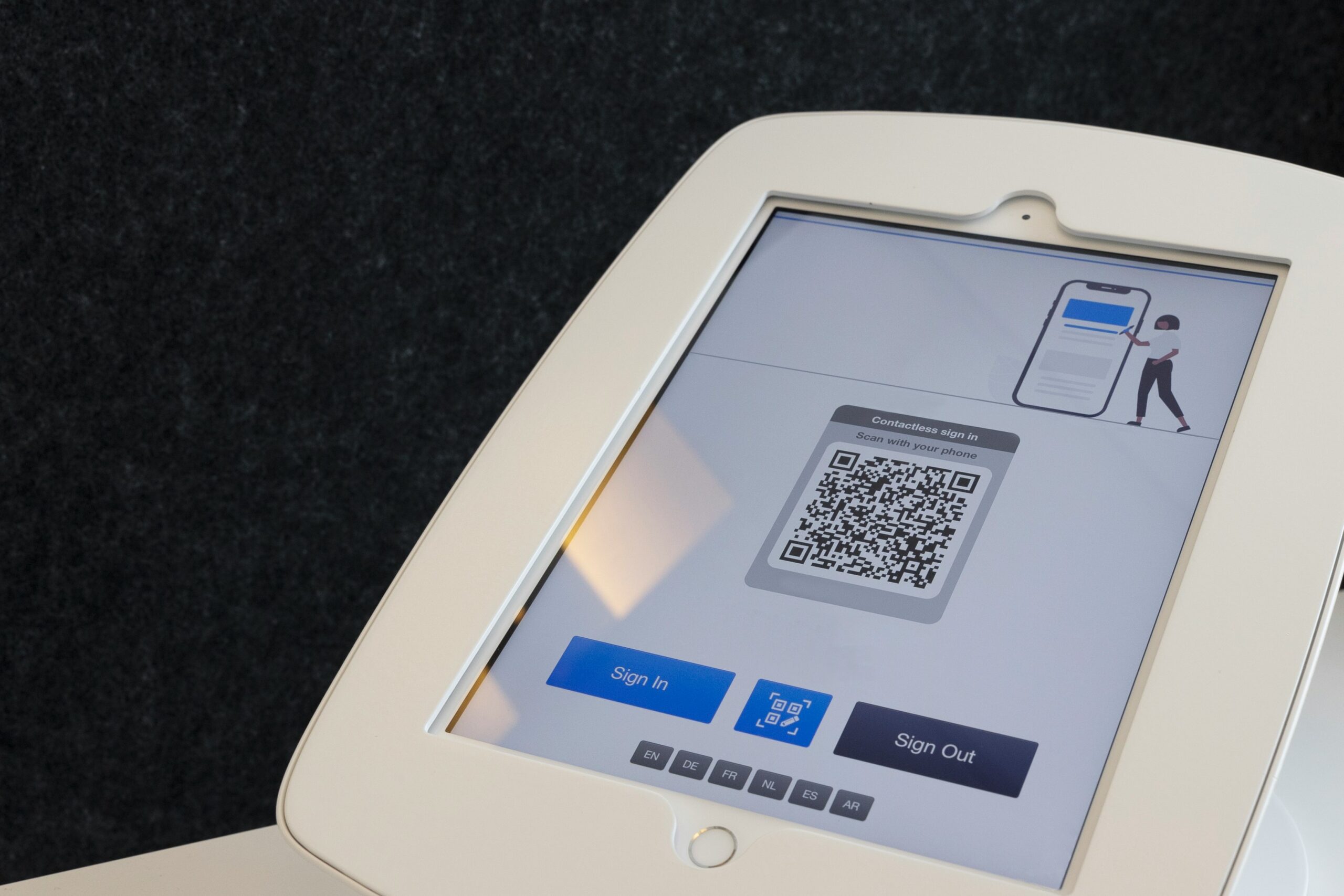In the digital age, the way we interact with information has evolved dramatically, and one of the most significant innovations in this realm is the Quick Response (QR) code. Originally developed in 1994 for the automotive industry in Japan, QR codes have transcended their initial purpose and have become a ubiquitous tool for bridging the gap between the physical and digital worlds. These two-dimensional barcodes can store a wealth of information, from URLs to contact details, and can be scanned effortlessly using smartphones and other devices.
As technology continues to advance, QR codes are increasingly being integrated into various sectors, enhancing user experiences and streamlining processes. The versatility of QR codes is one of their most appealing features. They can be used in a myriad of applications, making them an invaluable asset for businesses and organizations looking to engage with their audiences more effectively.
With the rise of contactless interactions, especially in the wake of the COVID-19 pandemic, QR codes have gained renewed relevance. They offer a safe and efficient way to access information without physical contact, making them an essential tool for modern communication strategies. As we explore the various applications of QR codes across different industries, it becomes clear that they are not just a passing trend but a fundamental component of our increasingly interconnected world.
Key Takeaways
- QR codes are two-dimensional barcodes that can store a large amount of information and are easily scanned using a smartphone camera.
- Retail stores are using QR codes for contactless payments, product information, and loyalty programs, enhancing the shopping experience for customers.
- Restaurants and cafes are implementing QR codes for digital menus, ordering and payment systems, and customer feedback, streamlining operations and reducing physical contact.
- Museums and art galleries are using QR codes to provide visitors with access to additional information about exhibits, artists, and historical context.
- Public transportation systems are utilizing QR codes for ticketing, route information, and real-time updates, improving convenience for passengers.
QR Codes in Retail Stores
In retail environments, QR codes have revolutionized the shopping experience by providing customers with instant access to product information and promotions. Retailers can place QR codes on product packaging or in-store displays, allowing shoppers to scan them for detailed descriptions, pricing, and even customer reviews. This immediate access to information empowers consumers to make informed purchasing decisions, enhancing their overall shopping experience.
Furthermore, retailers can use QR codes to direct customers to their websites or social media pages, fostering deeper engagement and encouraging repeat visits.
Additionally, QR codes can be instrumental in streamlining operations within retail stores. For instance, they can be used for inventory management by allowing staff to quickly scan items for stock updates or reordering purposes.
This not only saves time but also reduces human error in inventory tracking. Moreover, retailers can leverage QR codes for loyalty programs, enabling customers to easily collect points or redeem rewards by scanning codes at checkout. By integrating QR codes into their operations, retailers can create a more efficient and customer-centric shopping environment.
QR Codes in Restaurants and Cafes
The restaurant industry has embraced QR codes as a means to enhance customer service and streamline operations. One of the most notable applications is in menu presentation. Instead of traditional paper menus, many establishments now offer digital menus accessible via QR codes.
Customers can simply scan the code at their table to view the menu on their smartphones, which not only reduces physical contact but also allows for easy updates to menu items and prices. This flexibility is particularly beneficial in a fast-paced environment where changes may occur frequently. Moreover, QR codes can facilitate contactless ordering and payment processes.
Diners can place their orders directly from their devices after scanning a code, minimizing wait times and improving overall efficiency. This system not only enhances the dining experience but also allows restaurants to manage their operations more effectively by reducing the need for staff intervention in order-taking. Additionally, restaurants can use QR codes to gather customer feedback through surveys linked directly from the menu, providing valuable insights into customer preferences and areas for improvement.
QR Codes in Museums and Art Galleries
Museums and art galleries have found innovative ways to incorporate QR codes into their visitor experiences. By placing QR codes next to exhibits or artworks, institutions can provide visitors with additional context and information about the pieces on display. Scanning a code can lead to audio guides, video content, or detailed descriptions that enrich the visitor’s understanding and appreciation of the art or artifacts.
This interactive approach not only enhances engagement but also caters to diverse learning styles, allowing visitors to explore at their own pace. Furthermore, QR codes can facilitate virtual tours and educational programs. Museums can create immersive experiences by linking QR codes to augmented reality (AR) content that brings exhibits to life through interactive displays on visitors’ smartphones.
This technology not only attracts tech-savvy audiences but also makes art and history more accessible to younger generations who are accustomed to digital interactions. As museums continue to adapt to changing visitor expectations, QR codes will play a crucial role in shaping the future of cultural engagement.
QR Codes in Public Transportation
Public transportation systems around the world are increasingly adopting QR codes as a means of improving efficiency and convenience for passengers. Many transit authorities now offer mobile ticketing options that allow riders to purchase tickets via an app and receive a QR code as proof of payment. This eliminates the need for physical tickets and reduces wait times at ticket counters or machines.
Passengers can simply scan their QR code at entry points, streamlining the boarding process and enhancing overall user experience. Additionally, QR codes can provide real-time information about transit schedules and routes. By placing codes at bus stops or train stations, commuters can quickly access updates on arrival times or service changes by scanning the code with their smartphones.
This instant access to information helps passengers plan their journeys more effectively and reduces uncertainty associated with public transportation. As cities continue to invest in smart transit solutions, QR codes will undoubtedly play a pivotal role in enhancing urban mobility.
QR Codes in Educational Settings
In educational settings, QR codes have emerged as powerful tools for enhancing learning experiences and facilitating communication between educators and students. Teachers can use QR codes to link students to supplementary resources such as videos, articles, or interactive quizzes that complement classroom instruction. This not only enriches the learning experience but also encourages students to take an active role in their education by exploring additional materials at their own pace.
Moreover, QR codes can streamline administrative processes within educational institutions. For instance, schools can use them for attendance tracking by allowing students to scan a code upon entering the classroom. This method is not only efficient but also minimizes disruptions during class time.
Additionally, educators can utilize QR codes for feedback collection by linking them to surveys or evaluation forms that students can complete anonymously. By integrating QR codes into educational practices, institutions can foster a more engaging and efficient learning environment.
QR Codes in Business Cards and Marketing Materials
In the realm of networking and marketing, QR codes have become an essential tool for professionals looking to make lasting impressions. Business cards featuring QR codes allow individuals to share their contact information seamlessly with potential clients or collaborators. When scanned, these codes can direct recipients to digital portfolios, LinkedIn profiles, or company websites, providing a comprehensive overview of one’s professional background without cluttering physical cards with excessive text.
Moreover, marketers are leveraging QR codes in promotional materials such as flyers, brochures, and advertisements.
By incorporating these codes into their campaigns, businesses can track engagement metrics and gain insights into consumer behavior. For example, a company might include a QR code that leads to a special offer or discount on its website; this not only incentivizes potential customers but also allows businesses to measure the effectiveness of their marketing efforts through analytics.
As networking continues to evolve in the digital age, QR codes will remain a vital component of effective communication strategies.
QR Codes in Healthcare Facilities
In healthcare settings, QR codes are proving invaluable for improving patient care and streamlining administrative processes. Hospitals and clinics are using these codes for patient identification purposes; by scanning a patient’s wristband with a QR code, healthcare providers can quickly access vital medical information such as allergies, medications, and treatment history. This ensures that patients receive appropriate care while minimizing the risk of errors associated with manual data entry.
Additionally, healthcare facilities are utilizing QR codes for appointment scheduling and patient education. Patients can scan codes on informational brochures or posters to access resources about procedures or conditions directly from their smartphones. This empowers patients with knowledge about their health while reducing the burden on healthcare staff for answering common questions.
As technology continues to advance within the healthcare sector, QR codes will play an increasingly important role in enhancing patient experiences and outcomes.
QR Codes in Events and Conferences
Events and conferences have embraced QR codes as a means of enhancing attendee engagement and streamlining logistics. By incorporating these codes into event materials such as badges or programs, organizers can provide attendees with instant access to schedules, speaker bios, or session details through their smartphones. This not only improves accessibility but also allows participants to customize their event experience based on their interests.
Moreover, QR codes facilitate networking opportunities at events by enabling attendees to exchange contact information effortlessly. Instead of manually entering details into devices or exchanging business cards, participants can simply scan each other’s QR codes to connect on professional networking platforms or social media channels. This seamless interaction fosters collaboration and relationship-building among attendees while minimizing barriers associated with traditional networking methods.
QR Codes in Real Estate
In the real estate sector, QR codes are transforming how properties are marketed and viewed by potential buyers or renters. Real estate agents are increasingly placing QR codes on “For Sale” signs or property listings that link directly to virtual tours or detailed property information online. This allows interested parties to access comprehensive details about a property instantly without needing an agent present at all times.
Additionally, QR codes can enhance open house experiences by providing visitors with easy access to property specifications or neighborhood information through their smartphones. By scanning a code at an open house event, potential buyers can learn more about features such as square footage, amenities, or nearby schools without relying solely on printed materials or verbal descriptions from agents. As technology continues to shape the real estate landscape, QR codes will remain an essential tool for connecting buyers with properties efficiently.
Conclusion and Future Possibilities for QR Codes
As we look toward the future, it is clear that QR codes will continue to play an integral role across various industries as they evolve alongside technological advancements. Their ability to bridge physical interactions with digital content makes them an invaluable asset for businesses seeking innovative ways to engage customers while streamlining operations. From retail stores enhancing shopping experiences to healthcare facilities improving patient care processes—QR codes are proving their worth time and again.
Moreover, as augmented reality (AR) technology becomes more mainstream, we may see even more creative applications for QR codes that enhance user experiences across different sectors. The potential for integration with emerging technologies such as artificial intelligence (AI) could further revolutionize how we interact with information in our daily lives—making it easier than ever before to access relevant content at our fingertips. In conclusion, embracing the power of QR codes is essential for businesses looking to stay ahead in an increasingly digital world.
Whether you’re a retailer aiming to enhance customer engagement or an educator seeking innovative teaching methods—QR codes offer endless possibilities for improving interactions across various domains. As we continue down this path toward greater connectivity through technology—now is the time for organizations everywhere to harness the potential of these versatile tools!
FAQs
What are QR codes?
QR codes, short for Quick Response codes, are two-dimensional barcodes that can be scanned using a smartphone or a QR code reader. They can store a variety of information, such as website URLs, contact information, or text.
How do QR codes work?
When a QR code is scanned using a smartphone or a QR code reader, it directs the user to the encoded information, such as a website, a video, or contact details. This makes it easy for users to access information quickly and conveniently.
Where can QR codes be used?
QR codes can be used in a variety of places, including marketing materials, product packaging, business cards, event tickets, restaurant menus, and educational materials. They can also be used for contactless payments and to provide access to Wi-Fi networks.
What are some effective uses of QR codes?
Some effective uses of QR codes include providing additional product information on packaging, linking to digital menus at restaurants, enabling contactless payments, and facilitating easy access to event details and tickets.
How can businesses benefit from using QR codes?
Businesses can benefit from using QR codes by providing a seamless and convenient way for customers to access information, make payments, and engage with their products or services. QR codes can also help businesses track and analyze customer engagement and behavior.
Are there any security concerns with QR codes?
While QR codes can be a convenient way to access information, there are potential security concerns, such as the risk of scanning malicious QR codes that may lead to phishing scams or malware. It’s important for users to be cautious when scanning QR codes from unknown or untrusted sources.
How can QR codes be created and managed?
QR codes can be created using various online QR code generators or through specific software applications. Once created, QR codes can be managed and tracked using analytics tools to monitor user engagement and behavior.









